Viking 'piggy bank' hoard discovered on Isle of Man
The 'piggy bank' contained an early version of Bitcoin.

An amateur treasure hunter on the Isle of Man discovered a Viking Age "piggy bank" hoard that contains a 1,000-year-old analog to today's Bitcoin.
The recently discovered hoard includes 87 silver coins, 13 pieces of cut, silver arm-rings, or "hack silver," and a handful of artifacts, according to a statement from Manx National Heritage, a charity and heritage agency on the Isle of Man in the Irish Sea.
The hoard has a "significant" amount of hack silver, much like the Glenfaba deposit, which was found on the Isle of Man in 2003, said Kristin Bornholdt Collins, an independent researcher and numismatist based in New Hampshire, who studies the Viking Age economy of both the Isle of Man and the Irish Sea region. This hack silver would have been weighed and possibly assessed for its quality during transactions, she said.
It's likely that hack silver was useful for international trade, because "it was practical for any size transaction and was decentralized, a currency without borders or political affiliation," Bornholdt Collins said in the statement. "In this sense, it was a modern-day equivalent to a cryptocurrency — we might even say it was something like the original 'Bitcoin.'"
Related: Photos: Roman-era silver jewelry and coins discovered in Scotland
Kath Giles, an amateur treasure hunter and former police officer, discovered the hoard with a metal detector in April. This is Giles' fourth historical discovery in three years, including a December 2020 hoard that included silver and gold Viking jewelry, according to Manx National Heritage.
After assessing the new hoard, Jayne Hughes, the Isle of Man coroner of inquests, declared it a "treasure." While this term may conjure images of fantastical wealth, the word "treasure" in this regard refers to artifacts that are at least 300 years old that include precious metals or at least two coins, according to the Isle of Man's Treasure Act of 2017.
Get the world’s most fascinating discoveries delivered straight to your inbox.
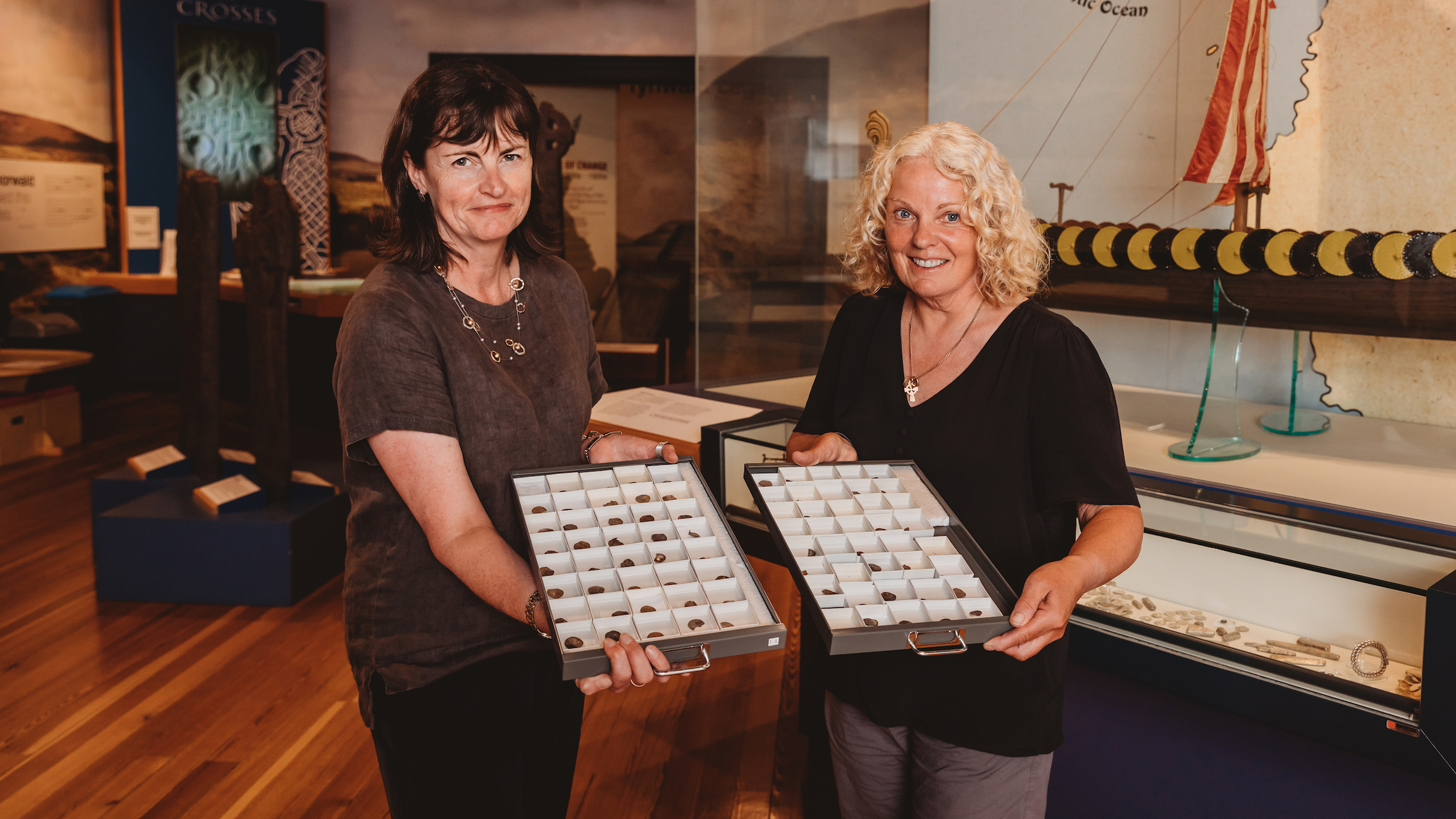
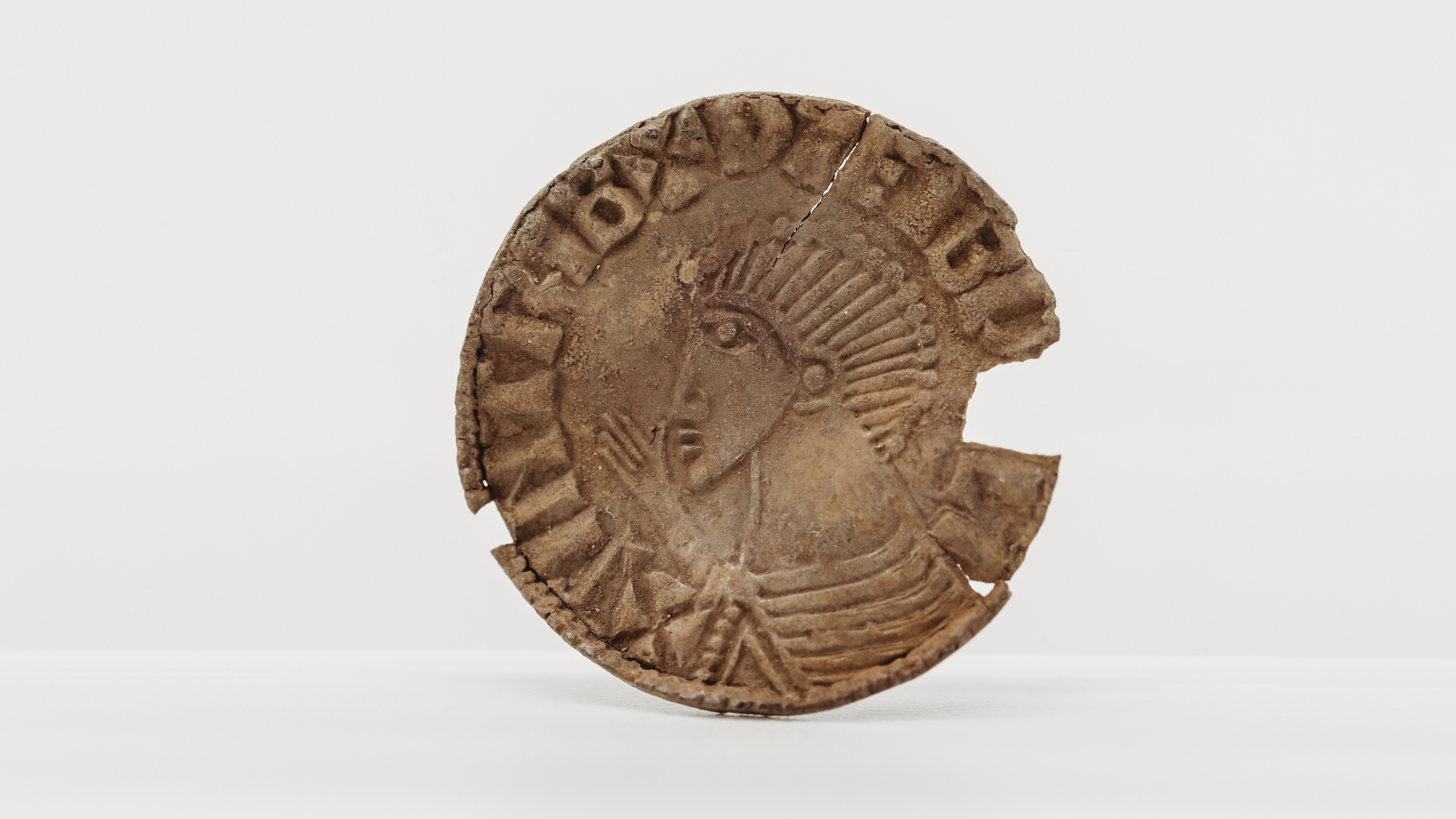
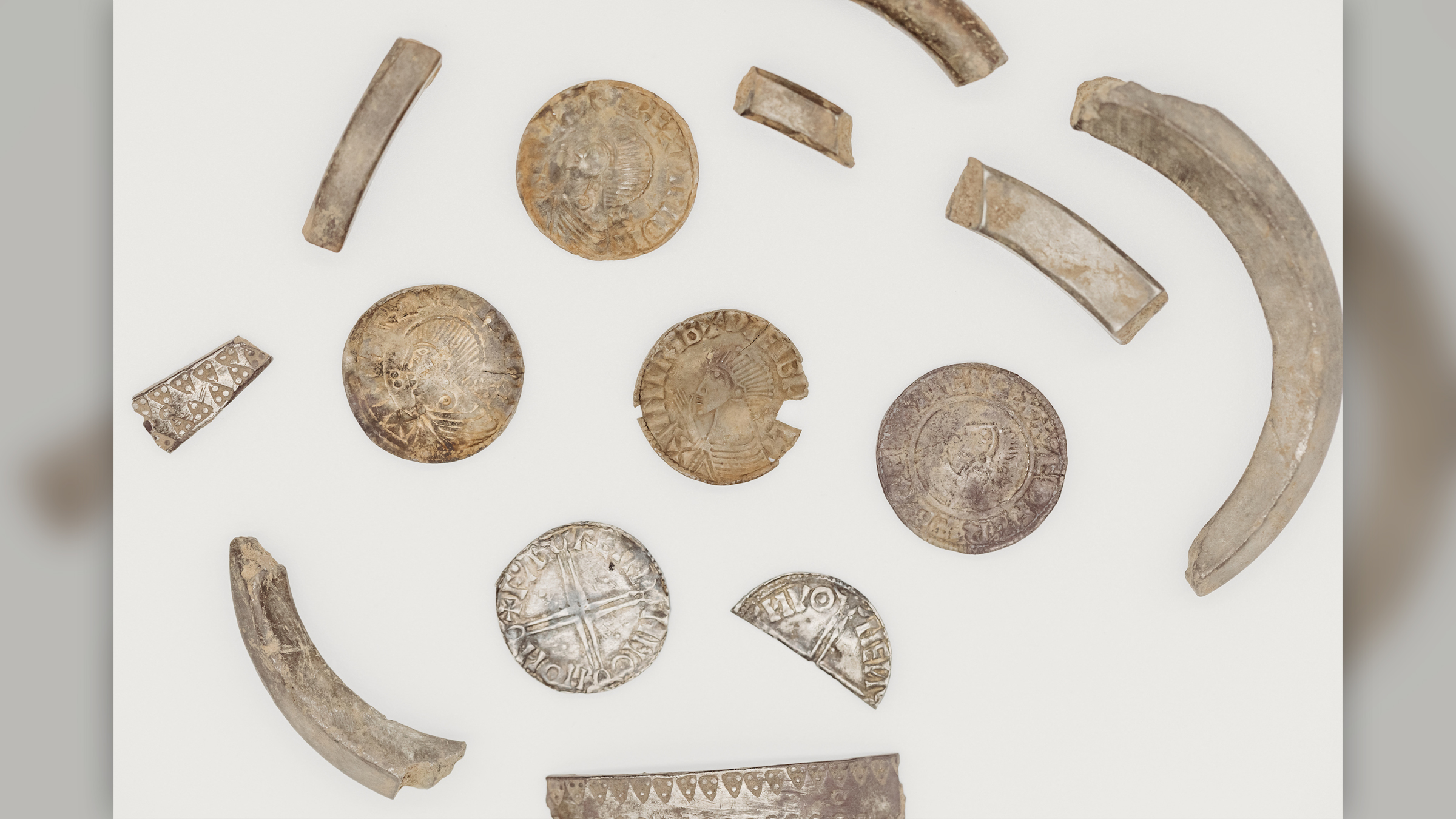
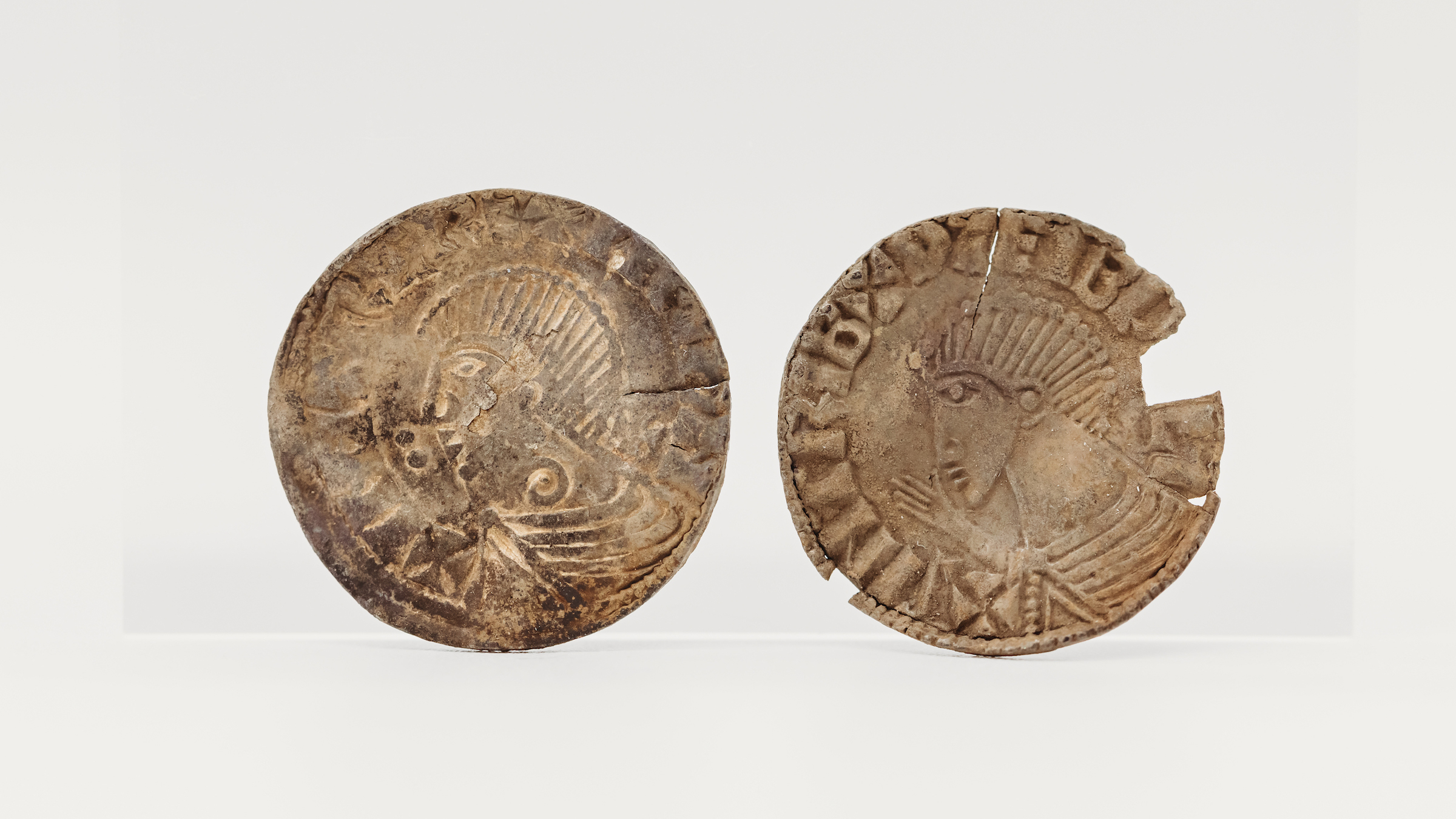
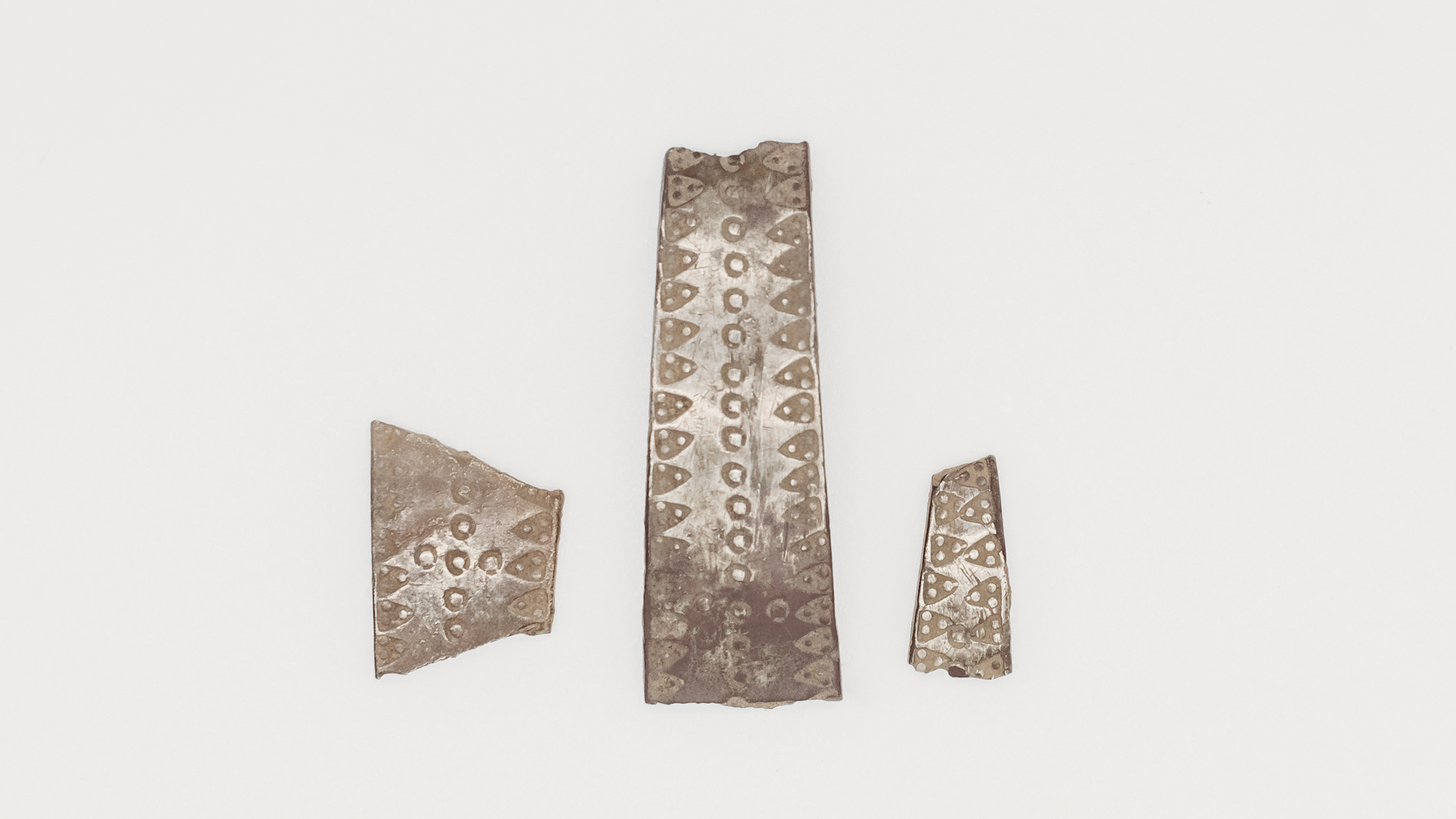
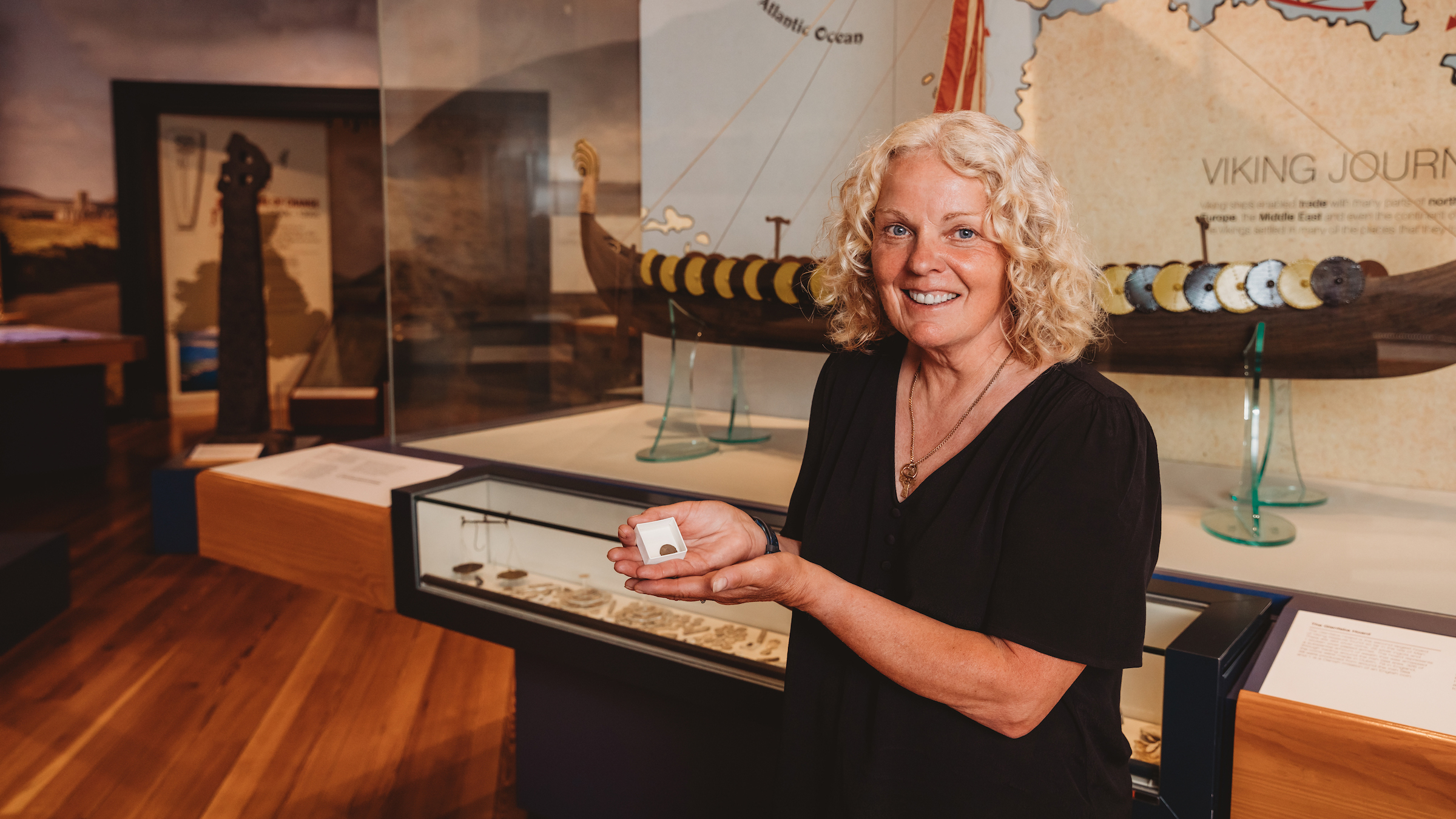
During an analysis of the hoard, Bornholdt Collins confirmed that the hoard included pennies that were minted in the Isle of Man, Ireland, England and what is now Germany. "Like our modern-day coins, many have an image of the monarch," Allison Fox, curator of archaeology at Manx National Heritage, said in the statement. The Irish and Manx coins have the profile of King Sihtric Silkbeard, the Norse king of Dublin from around 989 to 1036, while the other coins have King Cnut of England, Denmark and Norway, King Aethelred II of England and also a Holy Roman emperor, Otto of Saxony, Fox added.
On the flip side of some of the coins is a "long cross," a symbol that was used as a guide to cut the coins when only a half-penny was needed, Fox said. Meanwhile, the hack-silver chucks were "part of a flexible system of payment, where the value depended on the weight and purity of silver," she said. "It is expected that the coins and the hack silver have over 90% silver content."
The dates on the coins indicate that "money" was added to the piggy bank-like hoard over time, but especially around 1035, Bornholdt Collins said. "Though, for the most part, it is a direct reflection of what was circulating in and around [the Isle of] Man in the late 1020s [and around] 1030," she said.
Much like the Glenfaba deposit, the new hoard is similar to a "wallet containing all kinds of credit cards, notes and coins, perhaps of different nationalities, such as when you prepare to travel overseas, and shows the variety of currencies available to an Irish Sea trader or inhabitant of Man in this period," Bornholdt Collins added.
The earliest Viking Age precious metal hoards date to the 950s, making this hoard one of the later stashes from that era. The hoard is the fourth Viking Age hoard discovered on the Isle of Man in the past 50 years, Bornholdt Collins said.
The hoard is now on display in the new Viking gallery at the Manx Museum, but will soon travel to London, U.K., where the Treasure Valuation Committee will review it at the British Museum.
Originally published on Live Science.

Laura is the managing editor at Live Science. She also runs the archaeology section and the Life's Little Mysteries series. Her work has appeared in The New York Times, Scholastic, Popular Science and Spectrum, a site on autism research. She has won multiple awards from the Society of Professional Journalists and the Washington Newspaper Publishers Association for her reporting at a weekly newspaper near Seattle. Laura holds a bachelor's degree in English literature and psychology from Washington University in St. Louis and a master's degree in science writing from NYU.
 Live Science Plus
Live Science Plus





